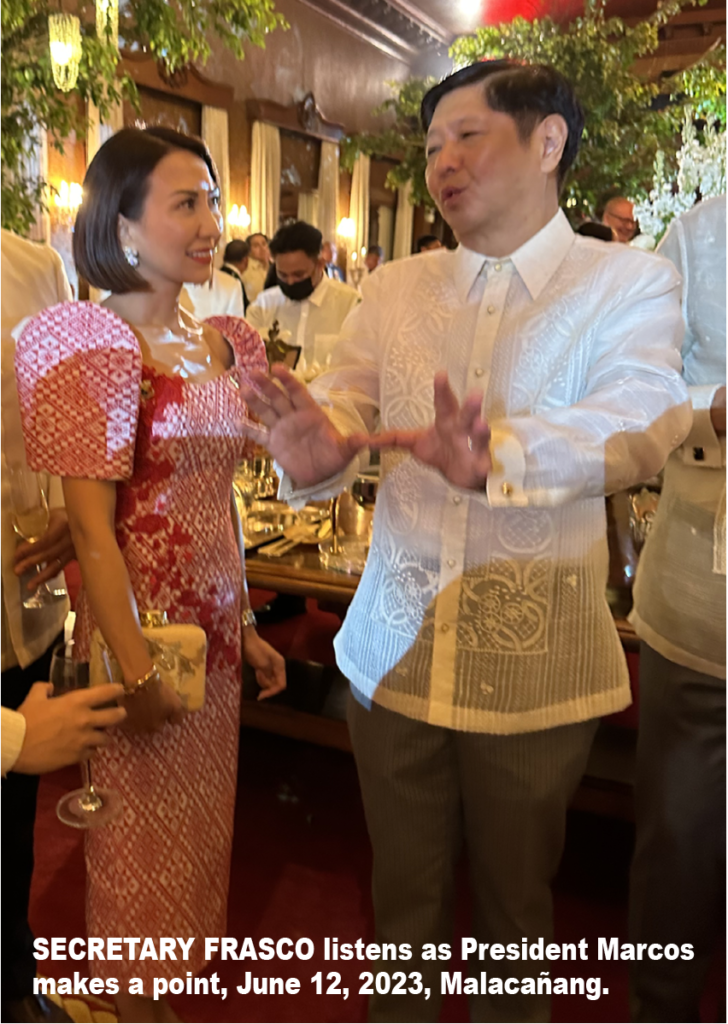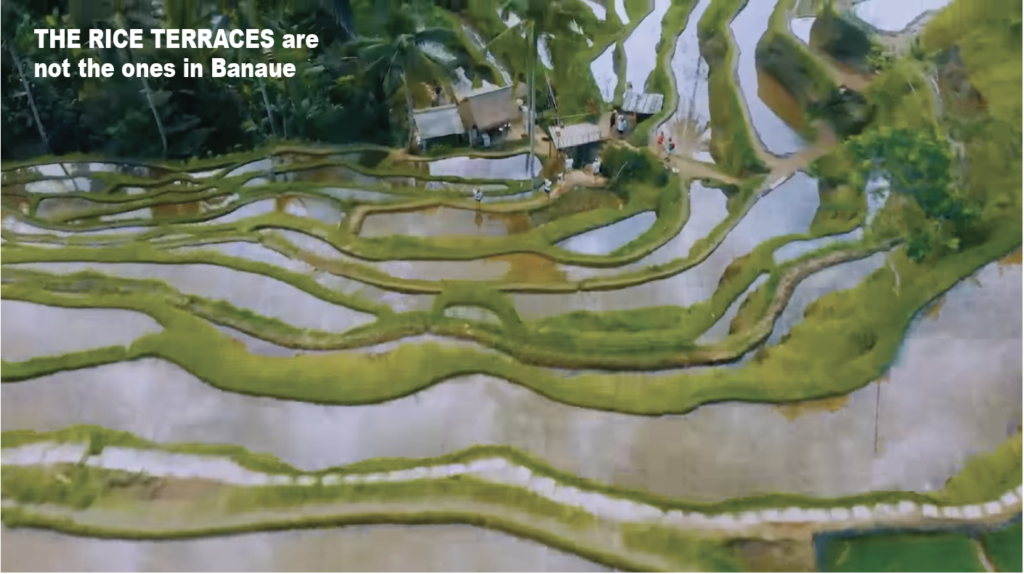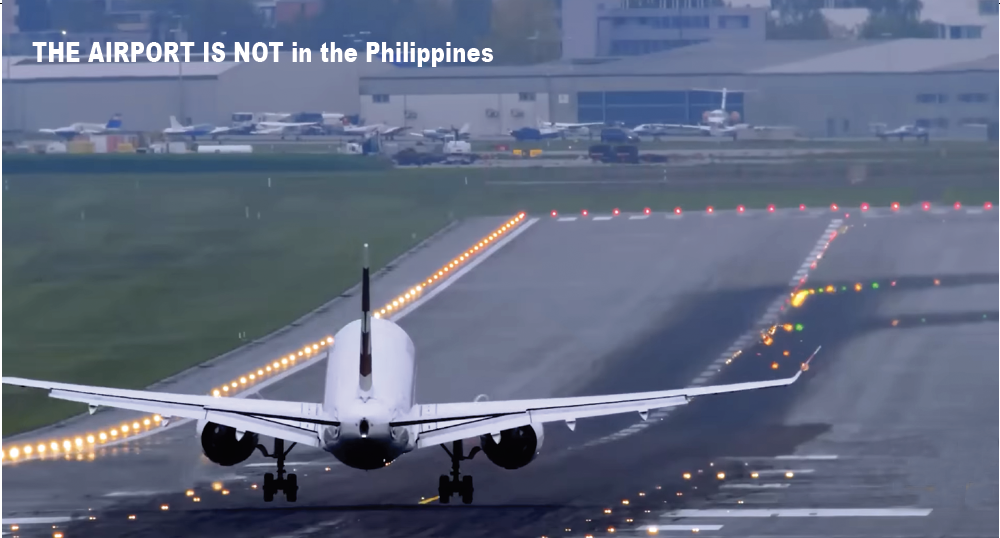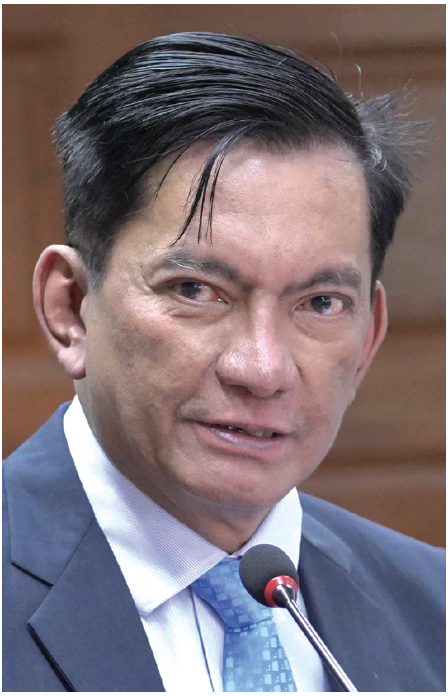By Tony Lopez
What a Frasco, I mean a fiasco.
Frasco, of course, is Maria Christina Frasco, 41, the corporate lawyer turned town mayor (of Lilioan, Cebu, the land of otap), and now, secretary of the Department of Tourism. DOT is the Philippines’ smallest cabinet department in terms of budget, P6.39 billion, only 1.21% of the P5.268 trillion 2023 national budget.
Tourism has an enormous impact on the economy. About 5 million international tourists visit the Philippines every year. Another 30 million are domestic tourists. DOT claims each tourist spends $1,387 per visit. So 5 million tourists would spend $6.935 billion or P381.42 billion or 60 times the DOT budget. And 5 million tourists mean 5 million jobs, at least.
Additionally, a key segment of tourism, aviation, contributes 3.4% of GDP, or P748 billion on a GDP of P22 trillion.
But not when there is a fiasco.
DDB, the ad agency that won the bid, produced a sample 106-second video of the new tourism slogan, “Love the Philippines”.
At first glance, the raw DDB “Love the Philippines” video looked like a solid work of marketing. There are at least 14 things (7 is the magic number of Marcos) to love about this country —the fun, the adventure, the flavors, the colors, the rush, the moments, the culture, the heritage, the sounds, the feelings, the experience, the friendships, the smiles, and of course, the Philippines itself.

The DDB video went viral, to use a cliché.
At its website, the DOT touted the deluge of praises for the new slogan, and of course, the DDB video.
“Widespread support has poured in for the country’s freshly-released enhanced tourism campaign, Love the Philippines,” DOT proclaimed June 29.

News5 reported that social listening tool Sprinklr recorded 59.1 million approval emotions from the public and a combined 28.9 million smile, happy, and appreciation emotions on the Love the Philippines campaign in the last 24 hours as of 4:50PM of Thursday (June 29).
Former senator and Tourism Secretary Richard Gordon, the brains behind the successful “WOW PHILIPPINES” campaign, found the enhanced campaign “instantly appealing”.
In a report quoted by DOT, Gordon said that Love the Philippines is “catchy and easy to recall”, adding that the phrase also “provides a double-meaning call for Filipinos to love the country more than just its physical wonders but also the people’s good traits. He said it is also a statement of appreciation for the Philippines experienced by tourists.”\
DOT quoted US Ambassador to the Philippines Marykay L. Carlson saying, “Almost one year since I arrived and I already have lots of reasons to #LoveThePhilippines—the food, the culture, and definitely the people.”
“I love it!”, Senate President Juan Miguel “Migz” Zubiri was quoted by a news report, complimenting the branding campaign as “clear and concise”.

On her Instagram, Senator Loren Legarda said that there are countless ways to love about the country and expressed her full support to the newly launched campaign.
House Deputy Speaker Ralph G. Recto, described the Philippines as a destination as “garden of roses”.
Then came the avalanche of flak. Several scenes in the video were not indigenous to the Philippines. They were borrowed or stolen, or bought from a video library Storyblocks.
A video of a fisherman casting his net is from Thailand; that of a plane landing is from Switzerland, that of the rice terraces is from Indonesia, that of sand dunes is from the United Arab Emirates. The video editing is fast-paced, ala Matrix, so the uninitiated won’t notice the intercalated videos right away.
A glaring oversight is the non-inclusion of Mayon, the world’s most perfect-coned volcano. There are of course, the usual frames of Bohol Chocolate Hills (but no tarsiers), Palawan beaches, a Catholic Church, dancing Igorot natives, Butanding whales, Pagudpud wind mills, and the business district. As to generic shots of clouds, mountains, plantations, beaches, and deep-sea diving, I am not now sure if they were taken in the Philippines.


Major omissions in the DDB video, aside from Mayon, include: 1) Taal, the lake within a lake; 2) Vigan Village; 3) Binondo, the world’s oldest and largest Chinatown; 4) Intramuros, the Walled City; and 5) the SM Mall of Asia and Megamall, among the world’s best and biggest malls.
Unmasked, DDB has been profuse with apologies, to the Department of Tourism (DOT), Secretary Christina Frasco, and the Filipinos for using foreign stock footage.

“While the use of stock footage in mood videos is standard practice in the industry, the use of foreign stock footage was an unfortunate oversight on our agency’s part,” DDB conceded on Sunday, adding it should have strictly followed proper screening and approval processes.
“The use of foreign stock footage in a campaign promoting the Philippines is highly inappropriate, and contradictory to the DOT’s objectives,” said the agency.
“The AVP (audio-visual presentation) was intended to be a mood video to excite internal stakeholders about the campaign,” DDB explained lamely.
“The AVP was produced by DDB Philippines at its own expense, and no public funds were released, or would be released, to fund the video,” DDB said. “This was a DDB initiative to help pitch the slogan.”
“We sincerely hope this will not diminish the genuine love and appreciation the stakeholders and the public have been showing for the ‘Love the Philippines’ campaign,” DDB said.
Earlier Rep. Joey Salceda called out the DOT for not including Mayon in the video. “For something as critical as an entire country’s image, you don’t ‘set the mood’ with plagiarism,” the Albay second district congressman sneered.
“Clearly, the exclusion of Mayon and other tourist attractions intrinsic to the Philippine brand was just a symptom of ‘trabahong tamad’ [lazy work],” Joey fumed.
Salceda demanded that DOT either apologize to Albay or fire its consultant.
